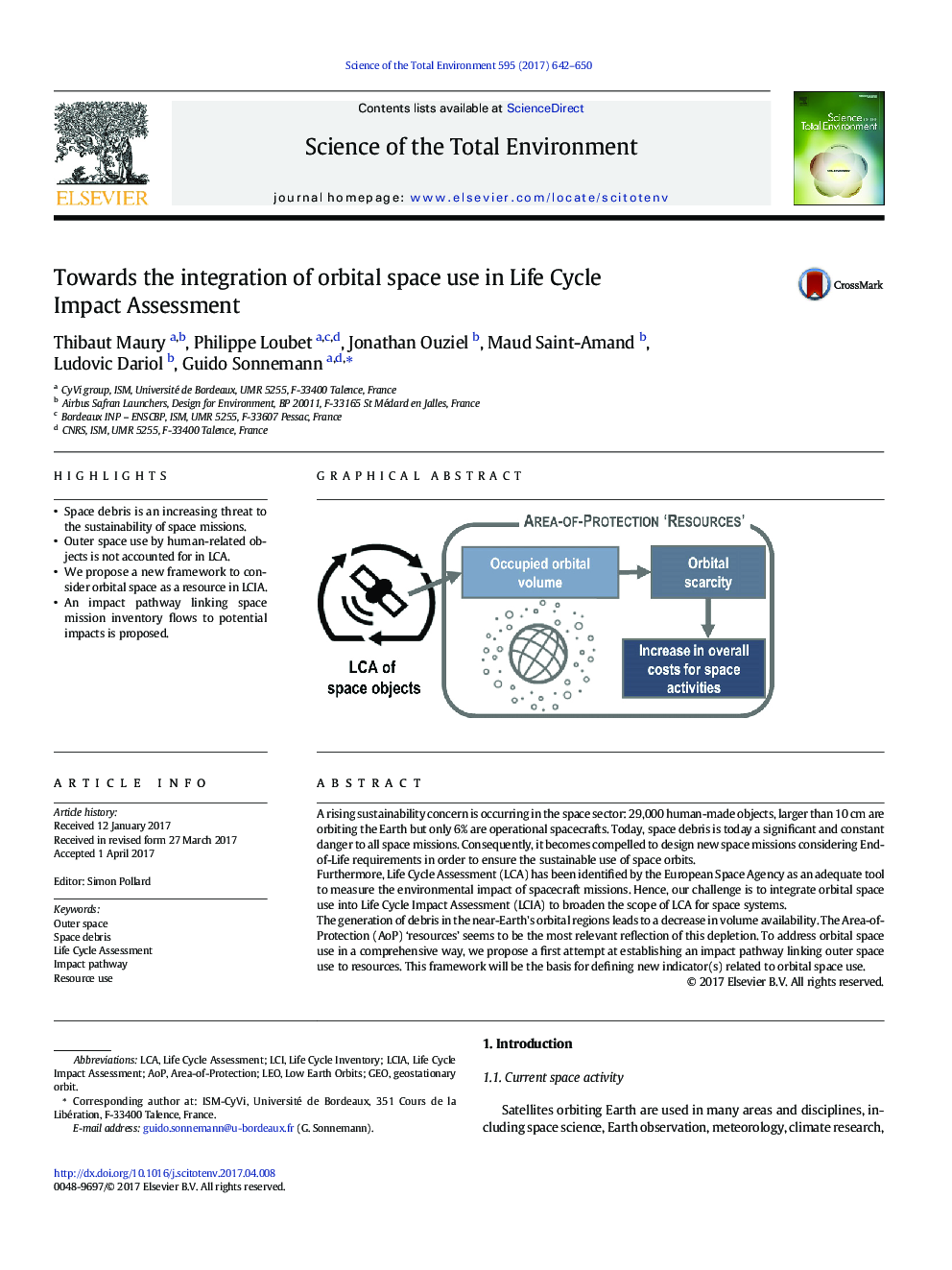| کد مقاله | کد نشریه | سال انتشار | مقاله انگلیسی | نسخه تمام متن |
|---|---|---|---|---|
| 5751317 | 1619701 | 2017 | 9 صفحه PDF | دانلود رایگان |
- Space debris is an increasing threat to the sustainability of space missions.
- Outer space use by human-related objects is not accounted for in LCA.
- We propose a new framework to consider orbital space as a resource in LCIA.
- An impact pathway linking space mission inventory flows to potential impacts is proposed.
A rising sustainability concern is occurring in the space sector: 29,000 human-made objects, larger than 10Â cm are orbiting the Earth but only 6% are operational spacecrafts. Today, space debris is today a significant and constant danger to all space missions. Consequently, it becomes compelled to design new space missions considering End-of-Life requirements in order to ensure the sustainable use of space orbits.Furthermore, Life Cycle Assessment (LCA) has been identified by the European Space Agency as an adequate tool to measure the environmental impact of spacecraft missions. Hence, our challenge is to integrate orbital space use into Life Cycle Impact Assessment (LCIA) to broaden the scope of LCA for space systems.The generation of debris in the near-Earth's orbital regions leads to a decrease in volume availability. The Area-of-Protection (AoP) 'resources' seems to be the most relevant reflection of this depletion. To address orbital space use in a comprehensive way, we propose a first attempt at establishing an impact pathway linking outer space use to resources. This framework will be the basis for defining new indicator(s) related to orbital space use.
200
Journal: Science of The Total Environment - Volume 595, 1 October 2017, Pages 642-650
